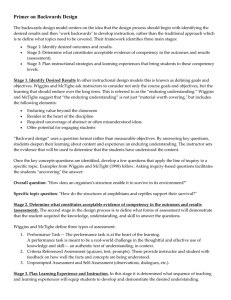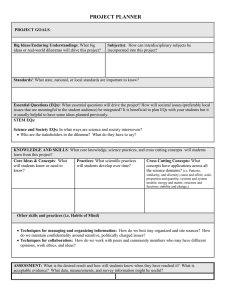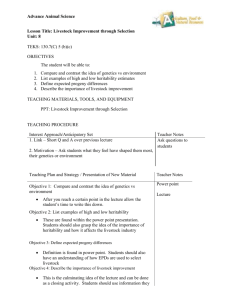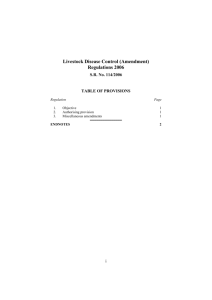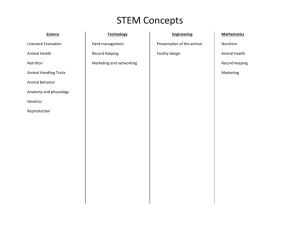Advanced Animal Science - Campbellsport Public Schools
advertisement
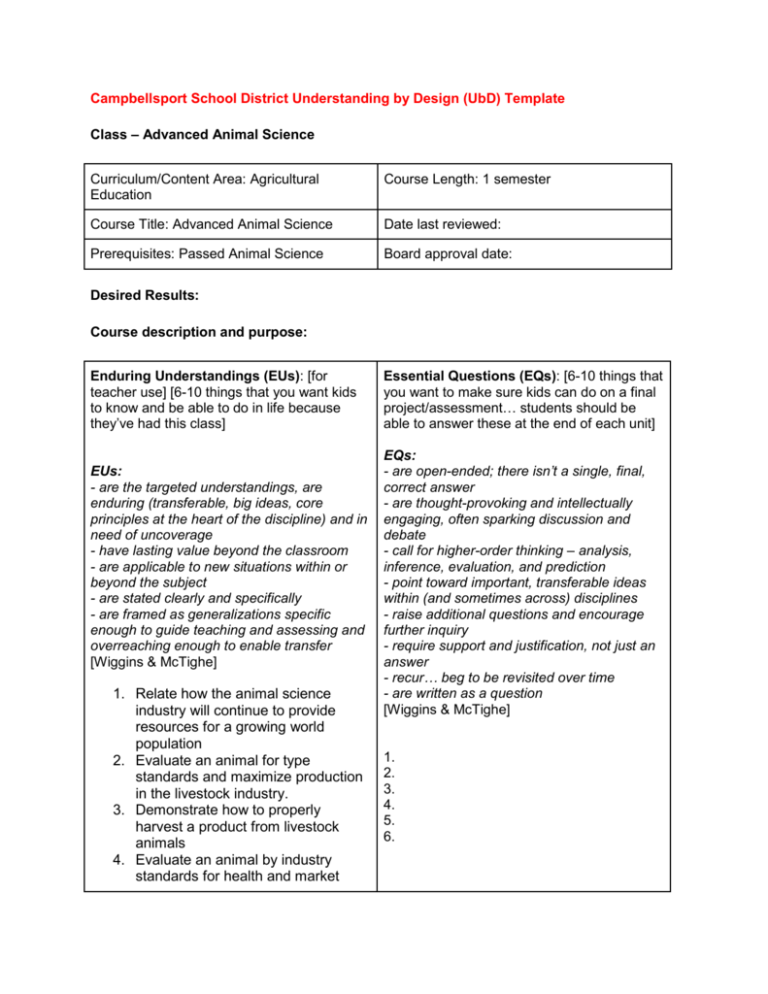
Campbellsport School District Understanding by Design (UbD) Template Class – Advanced Animal Science Curriculum/Content Area: Agricultural Education Course Length: 1 semester Course Title: Advanced Animal Science Date last reviewed: Prerequisites: Passed Animal Science Board approval date: Desired Results: Course description and purpose: Enduring Understandings (EUs): [for teacher use] [6-10 things that you want kids to know and be able to do in life because they’ve had this class] EUs: - are the targeted understandings, are enduring (transferable, big ideas, core principles at the heart of the discipline) and in need of uncoverage - have lasting value beyond the classroom - are applicable to new situations within or beyond the subject - are stated clearly and specifically - are framed as generalizations specific enough to guide teaching and assessing and overreaching enough to enable transfer [Wiggins & McTighe] 1. Relate how the animal science industry will continue to provide resources for a growing world population 2. Evaluate an animal for type standards and maximize production in the livestock industry. 3. Demonstrate how to properly harvest a product from livestock animals 4. Evaluate an animal by industry standards for health and market Essential Questions (EQs): [6-10 things that you want to make sure kids can do on a final project/assessment… students should be able to answer these at the end of each unit] EQs: - are open-ended; there isn’t a single, final, correct answer - are thought-provoking and intellectually engaging, often sparking discussion and debate - call for higher-order thinking – analysis, inference, evaluation, and prediction - point toward important, transferable ideas within (and sometimes across) disciplines - raise additional questions and encourage further inquiry - require support and justification, not just an answer - recur… beg to be revisited over time - are written as a question [Wiggins & McTighe] 1. 2. 3. 4. 5. 6. readiness. 5. Argue the livestock production practices for animal welfare and production. 6. Compare and contrast the livestock production practices of all areas of animal production. 7. Relate how technology is being used in the field of animal science to produce higher quality products with less inputs.


